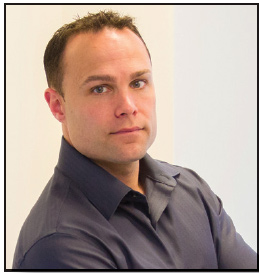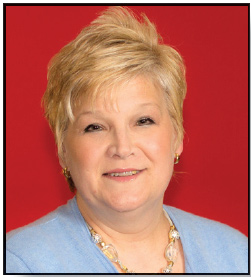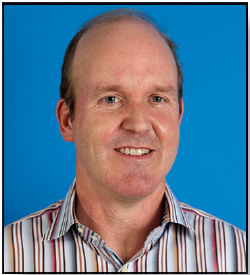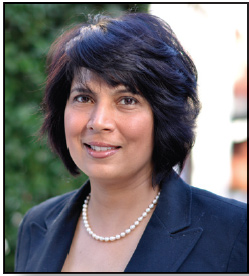The rise of digital, social media and mobile has not only changed how pharma communicates with its customers, but also how pharma works with its agency—or rather agencies. Pharma now has to choose whether to have several agencies, each specializing in a different medium (traditional and digital) or even its own channel (social, mobile, print, etc.), or to work with an agency that can handle it all. PM360 asked marketers on both sides of the aisle (clients and agencies) to describe the key to a strong relationship? How to set up a relationship that keeps both parties’ goals clearly in focus and what it takes to ensure those goals are reached? And finally, how has the digital world impacted the client-agency relationship and is it better to take the siloed approach or go all-in-one?
 Jonathan Kuhn
Jonathan Kuhn
Senior Director, Global and Brand Marketing
Acorda Therapeutics
jkuhn@acorda.com
What makes for a good client-agency relationship? Mutual trust would have to be first, and then, team chemistry. It’s all about finding the right size partner with a compatible business philosophy, not to mention ones you’d want to spend lots of time with.
A strong, successful relationship is maintained by treating the agency as a partner and a member of your extended team. Agencies provide the greatest value when they’re actively involved in your decision making. Also be as transparent as possible about budgets and business potential, so the agency brings actionable ideas without wasting everyone’s time and energy.
When first establishing a relationship with an agency, clients should clearly articulate the mission of their company and its leadership philosophy. At Acorda, for example, we’re dedicated to improving the lives of people with disorders of the nervous system. All our partnering agencies are also committed to bringing us to that goal.
Establishing clear common goals also ensures that appropriate expectations are set. And to maintain this focus, open and regular communication is necessary. Holding weekly status meetings by telephone is fine, but doesn’t replace regular face-to-face interaction.
Today’s multiplicity of communications channels has forced companies to decide whether to find a single partner with capabilities across many platforms or several with specific expertise. It’s not difficult to work with an array of partners as long as they all play nicely together in the sandbox. And this is where the brand leader comes in. The lead marketer should initially set expectations and not be afraid to address issues when agencies are not communicating effectively with each other. If cross-agency collaboration is done well, you get a more fruitful output, with a depth and breadth of ideas.
In the end, whether working with one agency or several, it’s about choosing the right partner.
 Susan Burns
Susan Burns
SVP, Group Account Supervisor
Flashpoint Medica
Susan.Burns@Flashpointmedica.com
A good client-agency relationship starts by making sure it is a good fit, both culturally and personally. The needs of a smaller entrepreneurial pharmaceutical company may be different from those of a larger one. Agencies must understand their clients’ needs as well as they understand their brands. This extends to everything from delivering budget-realistic ideas to stewarding projects through promotional review.
Not long ago, one needed to know simply the market and the medicine, but today that market has exploded across an ever-growing sea of channels which has forced us to change how we foster strong relationships. We now have more clients on a brand team and multiple agency partners, each with their own specific expertise. Nevertheless, agencies must stay at the forefront of all these channels so we can remain a resource and brand champion for our clients and their other partners.
So is it “jack of all trades, master of none”? Of course, we challenge ourselves to become masters, because we want our clients to continue to be able to turn to us for advice. This means attending industry conferences, meeting regularly with channel-specific vendors and embracing social media—my Pinterest boards, for example, are a mindboggling mix of marketing trend infographics and yummy desserts.
When companies work with several agencies, collaboration is most effective when each has a specific, clearly defined responsibility. Expectations are best established when the client sets the tone for collaboration, not competition. It’s also helpful to have one agency of record responsible for content to ensure consistency across partners. Holding monthly in-person meetings and proactively sharing projects among agencies go a long way to efficiently delivering great work. And who doesn’t love Google Docs?
In the end, I believe the sign of a really good relationship is one in which the words “agency” and “client” are never uttered. And we go by first names only.
 Nick Colucci
Nick Colucci
President and Chief Executive Officer
Publicis Healthcare Communications Group
Nick.Colucci@publicishealthcare.com
We are constantly referring to the “rise” of digital, mobile and social media, but the reality is that this is the media—channels that consumers and healthcare professionals across the globe are using to connect to each other and to brands.
Many brand marketers attempt to engage customers through very specific channels, but we’re quickly realizing customers today migrate fluidly across many different channels in search of information related to their health. While specific channel knowledge and expertise are important, it is critical to have a team that truly looks at a project holistically—through a customer-centric, channel-agnostic lens.
This lens requires strategists and experts in different areas—teams skilled in identifying patterns of online data consumption via social listening, experts in messaging and digital content delivery, or mobile technology. That is the value that an agency network can provide over a single agency. A custom-built approach to client service enables truly orchestrated marketing efforts around how, where, and when clients’ customers wish to engage, rather than targeting customers one-dimensionally through individual channels.
As public health becomes global health, a siloed approach has become obsolete. A single agency rarely meets all the demands of a global brand, let alone the needs of a global pharmaceutical company. That is why pharma companies today prefer to partner with agency networks that offer not only global breadth but also a depth of expertise. Being able to tap into a range of top talent—experts versed in mediums, channels and culture—serves global needs far more fluidly than a single agency.
We then become a business solution—a networked agency, not a network of agencies—that our clients rely on to drive outcomes, regardless of channel preference or medium. This helps ensure our clients are reaching the right audience in the right way, as opposed to sending out messages that can get lost in the online “white noise.”
 Amy Graham
Amy Graham
EVP, Director of Client Services
Ogilvy CommonHealth Specialty Marketing, part of Ogilvy CommonHealth Worldwide
Amy.Graham@ogilvy.com
The fundamental building blocks for a strong client-agency relationship begin with full transparency—open communication, honesty of response and a desire to always do what’s in the best interest of the brand. The agency owes it to the brand team and the partnership to know as much about the brand as the internal team. We become the stewards of the brand, keeping it in our care and helping to nurture its performance in partnership with the brand team.
Once transparency is established into the relationship, it is far easier to have ongoing communications that recognize and drive successful goals and brand focus. You take nothing for granted. Having regularly established check-ins is critical to reinforce brand alignment. We can, and sometimes should, disagree to ensure that we’re pushing one another’s thinking, but at the end of the day, consensus is critical.
Meanwhile, the rise of new channels has only helped to drive a stronger client-agency relationship as clients are forced to learn to navigate these channels and how they affect internal processes and also how to garner MLR approvals. This has helped to strengthen the client-agency partnership, as a channel-savvy agency partner can foresee and manage potential problems and drive approvals for the brand team.
A siloed approach rarely leads to the best team thinking for a brand. This also seems to be true for channel execution. As brands become more customer-centric, the focus becomes more about getting the right message to the right target audience and less about the channel with which to target that audience. So breaking down silos can only benefit a brand in the long run. That said, I’ll close with where I started. As an agency, we’re charged with being the steward of your brand. Therefore, it’s our mission to do what’s in the best interest of your brand—no matter whether we’re acting as a single entity or partnering with other agencies.
 Marshall Ungar
Marshall Ungar
Group Product Manager, Tamiflu
Genentech USA
mungar@gene.com
Although it sounds simple, I believe that the keys to strong client-agency relationships are much the same as the keys to strong manager-employee and manager-team relationships. It is crucially important to align around clear goals and to make sure that roles and responsibilities are well understood. It is also important to provide clear direction, leave plenty of room for creativity, give clear and prompt feedback, and avoid surprises. To accomplish this takes regular communication both on the phone and in-person. It also sometimes takes decisiveness and a willingness to be the judge and arbiter on my part in times of disagreement.
This approach fits well with my preference to hire agencies that are experts in their fields (creative, media, digital, digital media, PR). Although it takes a significant amount of time and effort to keep everyone aligned in this approach, I believe the chances of great outcomes are higher.
Since I manage my agencies much like I would manage my employees, it is a similar investment as managing an extended team. During crunch times, we meet at least once a week (often by phone), and my internal team members have check-ins with each agency separately. I encourage agencies to coordinate with each other on their own, but obviously keep a close eye on the expenses associated with that.
Several times a year, I will bring key members from all of my agencies and internal staff together for planning sessions, debriefing on performance, celebrating wins and building relationships. I’ve found that these in-person sessions build trust, respect and collaboration across agencies. Maybe I’ve just found a great group of agencies, but I’d like to think that the approach I’ve used to build the team is a part of the success we’ve had together.
 Tim Frank
Tim Frank
Managing Partner
Triple Threat Communications
tfrank@triplethreatcommunications.com
What is the key to a strong client-agency relationship? It’s simple. Do what’s best for the brand. Five things we put into practice every day:
1. Align your priorities with your client’s priorities.
Make sure everyone on your team understands the brand goals and priorities. Then create an environment where they wake up thinking about what’s best for the brand and not what’s best for the agency. If this doesn’t describe you and your team, realize that your client’s business is your business and realign.
2. Make sure your clients know you have their best interests at heart.
Be as willing to say, “No, we are not the best people for that task” as you are to say, “Of course we can do that.” If you lack the core capabilities to do a job well, finding someone else who is better positioned or qualified shows you have the brand’s success at the forefront.
3. Never sell. Solve.
Provide the right solutions to client challenges, regardless of whether your agency will actually do the work. Before promoting a shiny proprietary offering, ask yourself if it is right for the brand. If it isn’t, don’t push it.
4. Stay flexible to changing needs without getting caught up in agency process.
Agency process has its place, but it can also lead to formulaic thinking. Know that no two projects are the same and that your client’s needs change over the brand’s lifecycle. Anticipate and adjust so you don’t get left behind.
5. Be fully transparent.
Don’t be afraid to tell your clients the “tough truth.” This means telling them what they need to hear—not just what they want to hear. It also means admitting your mistakes quickly. Be upfront and genuine and you may be surprised how often clients turn to you for answers.
 Ken Ribotsky
Ken Ribotsky
Chief Executive Officer
Brandkarma
ken.r@brandkarma.org
Obviously, clear and constant communication is very important, but it’s also key that the agency team be senior enough to completely understand everything about the client’s brand, the therapeutic category and the unique market challenges. They need to be able to anticipate the kinds of obstacles that clients face in order to avoid some of the common pitfalls that cause delays in development. Developing a level of trust is also important, but that only comes when your client knows you live and breathe their brand as intimately as they do. You also need to be able to tell your client what they need to hear, not necessarily what they want to hear—providing strategic solutions to help overcome their marketing obstacles.
There needs to be a lot of give and take, especially when you are first establishing a harmonious relationship. Right from the start, you need to set clear goals and manage expectations. That’s probably the biggest pitfall—not clearly identifying what you are able to accomplish versus what you may hope to accomplish. You also have to agree upon specific benchmarks that will be used to track your accomplishments over time. It’s also important to remember that no two clients are alike. You need to understand the best method of communicating with a client, what’s most effective for them and what’s going to keep your team aligned with their business goals.
The Effect of the Rise of Digital
In our case, it has brought us even closer to our clients because we have helped them understand the ever-changing landscape of new and emerging channels. We can handle it all and recommend managing it all. The problem with using a siloed approach, however, is that seamless integration can be challenging, because you don’t have one team looking at the big picture. Your channels can often become disconnected, which can negatively impact your ROI.
 Ken Jordan
Ken Jordan
Director of Client Services
ICC Lowe
kjordan@icclowe.com
We often hear agency people say “I have a good relationship with my clients.” Typically, this is measured by how friendly or personal the relationship has become. While we believe it’s important to have a fun and enjoyable experience with our clients, at ICC Lowe we use the term “Productive Client/Agency Relationship” when describing one that truly works well. Being “productive” means that both the client and agency are invested in each other’s goals. An agency should be intent on helping clients and their brands to achieve success in the marketplace. We know that if our clients and the brands they manage aren’t successful, the agency won’t have as many opportunities to do great work. Which is why in truly productive relationships, our clients also help us accomplish our goals. This may include enhancing the performance of our people, allowing us to bring forward unique ideas and, at times, to take risks to bring breakthrough work to them.
By first aligning on the client’s and agency’s shared goals for the brand, both are invested in achieving them right from the start of the relationship. Our most productive relationships are ones where we receive regular performance data from our clients, allowing us to respond immediately to any market shifts and challenges. Sharing of key data and involvement in key aspects of the business (planning, market research, etc.) provides the agency an appropriate and effective way to contribute to the clients’ business and enables the true value of the partnership to come through. Last year, one of our clients involved us from “word one” in the development of their business plan. Not only did this leverage the strategic skills of the agency, it resulted in a more effective and impactful tactical plan, given the depth of our understanding of the client’s goals.
 Janaki Joshi
Janaki Joshi
CEO
Iris Interactive Corporation
Janaki.Joshi@irisinteractive.com
A strong client-agency relationship is like a good marriage; each partner is creating magic, actively helping the other grow and protecting the interest of the other. Like any relationship, the success is built on a foundation of alignment. In my view, there are four key dimensions of alignment.
1. Strategic Alignment: The first key is that the agency truly understands and influences the strategy for the brand and the business. A strategy that combines the client’s insights into the brand values with the agency’s ability to bring those values to life with its creativity and communication skills.
2. Operational Alignment: As they say “The devil is in the details,” in the day-to-day relationship. When there is operational alignment, the client-agency teams operate efficiently as a high performance team to deliver the campaign with minimal friction.
3. Cultural Alignment: Do the teams spark well and do they have shared beliefs and values to focus the teams’ energy into building the brand? It does not mean they agree; creative conflict, dynamic tension and chemistry are key.
4. Financial Alignment: Like any marriage, if both partners don’t see eye to eye on finances then that can break the relationship. Especially as we are entering an era of the “Patent Cliff,” both need a joint commitment to focus the marketing budget on building the brand, generating revenue and minimizing waste.
In the era of digital marketing, the need for such alignment is even higher. The digital world is more complex and requires faster turnaround. Successful digital marketing therefore requires cross-functional collaboration across not just marketing but also regulatory, medical, drug safety, legal and IT—from conception through to execution—with compliance checks built in all the way.
 Patrick O’Shea
Patrick O’Shea
Head of Account Services
Fingerpaint
poshea@fingerpaintmarketing.com
What is the key to a strong client-agency relationship?
The first agency I joined back in the early ’90s epitomized strong client-agency relationships. That relationship philosophy was in its 60th year and was based on one enduring virtue—trust. One might ask, “How can trust transcend several transitions of account and client leadership over such a long duration of time?” But when the core of the relationship is always based on mutual trust, the expectation is always clear and consistent regarding the performance of both groups.
When trust is present, there is a reduced need for detailed and specialized knowledge of agency operations and a greater focus on advertising quality. Thus, trust enhances confidence in decision making. If the client-agency relationship is established at the onset with mutual trust, there exists a commitment between partners and clients, who are often eager to invest in that relationship. Long-term strategic partnerships facilitate knowledge-based brand building. In turn, mutual trust is strongly associated with clients’ loyalty to their agency.
From the agency perspective, having loyal clients means that more time can be spent adding value to existing business and less time spent seeking new client relationships. With client loyalty, an agency typically delivers distinct creative ideas, consistently on strategy and effectively building brands and, thus, perpetuating a continual level of trust.
Trust leads clients to enlist their agency’s assistance beyond the brand and into every part of the company. The traditional boundaries are broken down and great ideas are shared. From franchise branding to employee handbooks to parking lot signage, agencies can drastically impact a client’s image and reputation—aligning them with the promise of their brands.
If trust is considered the fundamental core of a productive, lasting relationship by both clients and agencies, the relationship will continue to strengthen year over year—even for 60 years.






